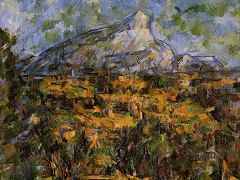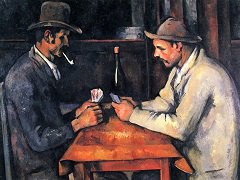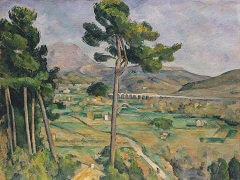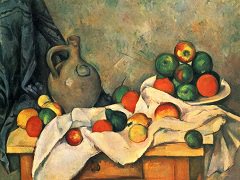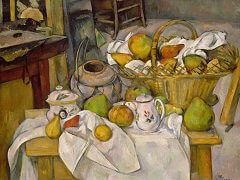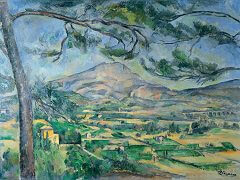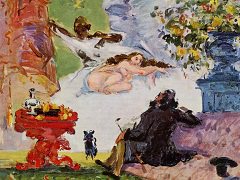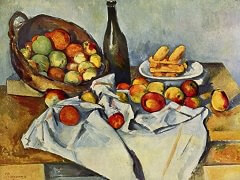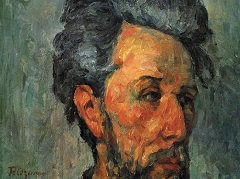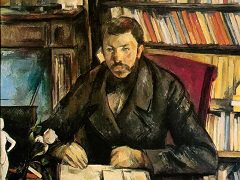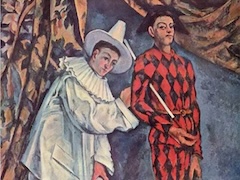Boy in a Red Vest, 1895 by Paul Cezanne
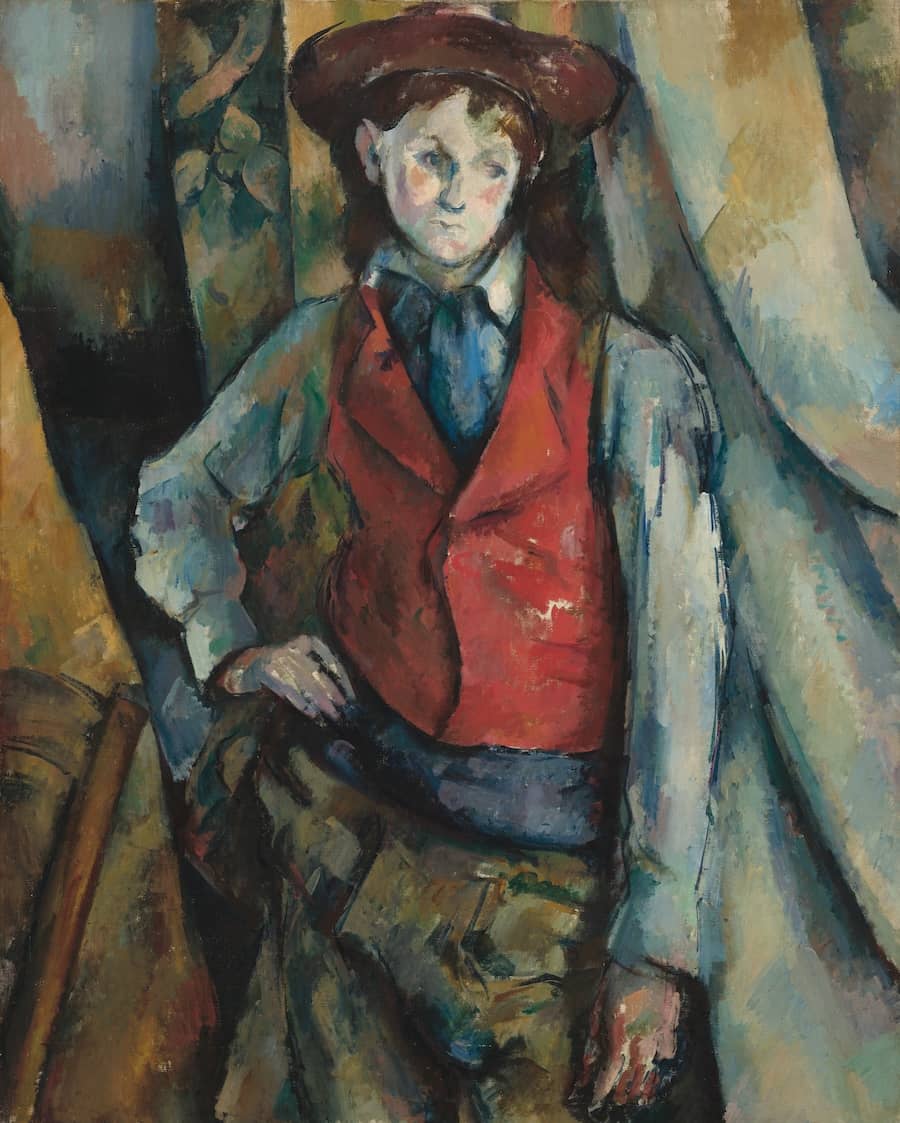
Boy in a Red Vest, 1895, is one of a class of late paintings with a pensive, youthful figure; there is an example in which a boy sits at a table beside a skull. Here the languid posture and the close envelopment by heavy sloping drapes convey the mood of depressed revery, without pointing to its theme. The boy, wrapped in a costume that resembles in substance the oppressive drapes around him, looks shrouded in his space. The red vest, too, is an element of the mood. This exceptional core of strong color is not expansive, but tends toward the cool and violet; the blues of the tie and sash are dark and greyed. The conventional classic pose of the academy nude, with one hand on the hip and the other hanging - a relaxed pose of movement and momentary rest - has become a posture of passivity and weakness. We measure against the limp, inert arm the delicacy of the balanced tiltings of the limbs and the great force of the repeated diagonal masses of the drapes. The long melancholy figure, with its sad grace, recalls the aristocratic Italian portraits of the sixteenth century in which activity has been arrested by introspection and doubt. Vague as they are, the boy's features are delicately drawn; we cannot help noting his shyness and troubled inner life. The faintly drawn lips are like the wings of a distant flying bird.
In contrast to this subdued tonality of feeling - surely important to Cezanne - the painting is vigorous and powerful, with that noble largeness of form we admire in the old masters. Cezanne's use of the drapes in this picture invoked a device that had been employed by a number of the Old Masters as a trompe-l'oeil way of drawing the viewer into the composition, pointing to the artifice of the scene, and also showcasing their own ability to paint something as lifelike as the drapery hanging in front of a picture; this was the case, for example, in The Art of Painting by Johannes Vermeer, and Danae by Rembrandt. It is a visibly arranged, formalized composition in which the self-balancing structure of the boy's pliant body is in turn opposed to the long rhythmical forms of the drapes and chair in alternating contrasts. The drapes, straight at the left, are curved at the right; the body, more bent and curved at the left, is rigid at the right. This highly imaginative composition, so carefully thought out, owes little to a direct impression. But the details of color and contour, in their infinite variation, betray the searching, sensitive eye, open to the visible world.


